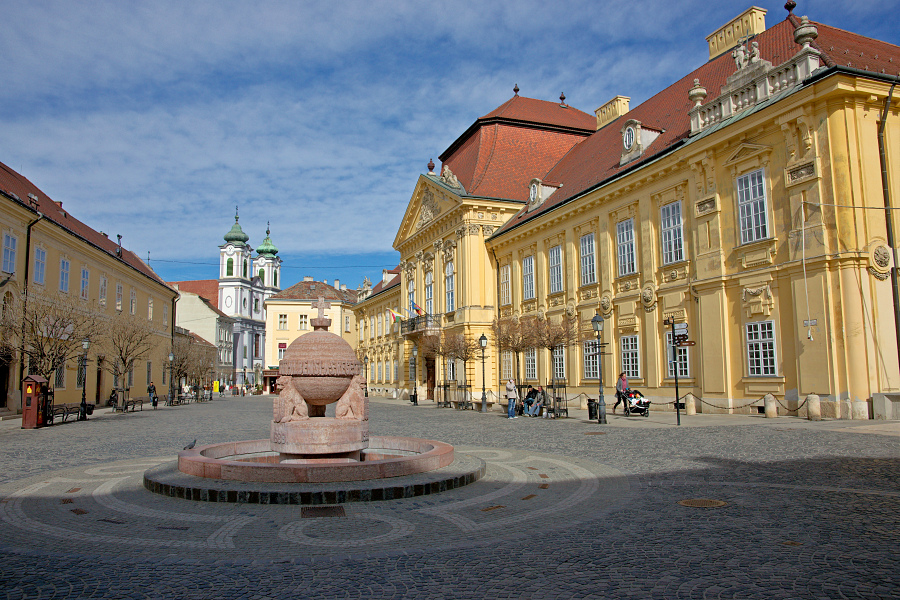
Szekesfehervar for Hungary, perhaps more significant than the capital Budapest. Over the long years of its history, it was called: “The City of Kings”, “White City with a throne”, and “Cradle of Hungarian statehood”. It was in the local cathedral that the monarchs of Hungary were crowned. Even though the temple itself did not survive, Szekesfehervar retained its royal character.
The first head of state to be crowned in the cathedral was Peter Orseolo, in 1038. And the last – Janos II in 1526. Kings Istvan the First, Bela the Second, Matthias Korvin and others found eternal rest in the temple.
Entertainment and attractions
The Bishop’s Palace in the style of classicism of the early 19th century immediately attracts the attention of travellers to the Town Hall Square. The Town Hall itself was built in the Baroque style. Another popular attraction is the Franciscan Church of St. Imre. There is also the main symbol of Szekesfehervar – the sculpture “Power”.
St. Stephen’s Cathedral is one of the most majestic and beautiful churches in the city. It was built in the centre of the Old Town on the site of an ancient Gothic temple destroyed by the Ottomans. The baroque church took 10 years to build, from 1758 to 1768.
The Garden of Ruins is one of the oldest pages in the history of Szekesfehervar. This is the name of the foundation of an ancient basilica built in the 11th century. Just the one where the coronation took place and the Hungarian monarchs rested.
On the main street of the city, there are a large number of shops, restaurants and bars. The Vereshmarty Theater built in the Baroque style and the Black Eagle Pharmacy, opened by the Jesuit Order in the 18th century, are also located here.
Bori Castle
Bori Castle of the middle of the 20th century is very interesting for tourists. It was erected according to the project of the architect Yene Bori in 1959, and the construction itself lasted more than 30 years. The architect presented this palace to his wife, Ilona Bori, which is why the interior contains many paintings and sculptures dedicated to his wife. The facade of the building is made with a mixture of several styles – Gothic, Renaissance and Romanesque styles.
